What’s the problem with Old-school farming?
“For me the turning point came when I started to work on a cotton farm and found out they were even spraying the birds for eating the cotton seeds”
Food production the conventional way is só 1970…
The norm is plowing the soil, poisoning the weeds and crops,
chopping most trees, leaving bare ground.
Soil-microbes die, sequestering of carbon fails, the soil compacts and is slow to absorb water.
Results: run off, erosion of topsoil, less evaporation of moisture that would normally cool the micro-climate.
When humans do this on a grand scale, it pushes the weather towards extremes, as we all are experiencing on the globe right now.
Droughts, heatwaves, torrential rains, hurricanes and floods are to a large extent the consequences of the enormous total area of bare ground on this planet.
Everything on our planet is connected.
The Earth is smaller than you experience.
Thought Experiment
Imagine …
What if you, and every person on this planet, would own a fair share of the Earth by a miraculous birthright?
How much usable land would you have?
Almost 4 soccer fields for each of us
Roughly an island of 130 x 150 meters (The landmass 149 million square kilometer divided by 7.6 billion people = 1.9 ha per person.)
But half of this island consists of mountains, barren land, ice sheets, forests, savannas. Great for hiking, very difficult to live on.
of which a patch of 65 x 75m is usable
That is 70 x 80 yd. When you are finished hiking, that is your arable land.
In soccer terms: roughly 8 penalty boxes.
Within that area, at the moment, 13 x 15m (the surface of 4 soccer goals!) is producing all your veggies, fruits, grains, cotton, and even bio-fuel.
The rest, 52 x 60m is now used to raise livestock (3,120m2, circa 3/4 acre) for your dairy and meat.
Note that such an area is not enough to feed your family-cow with her calf throughout the year.
Note about the possibility of raising animals on this plot of 52x60m
You cannot simply put your family-cow on that patch of 52 x 60 m to graze all year. It is too small, it would destroy the plot and the cow. That’s why conventional livestock business, with cramped feedlots, depends on importing fodder, obtained from clearing forests to grow (GMO) soy and corn with pesticides.
If all people would eat as much meat, raised in this way, as westerners, we’d need more planets.
But there is a sustainable way, that even would enrich the soil.
Translated in our thought-experiment: your family-cow should join the cows of other persons in your neighborhood as a big herd and rotate on all ‘gardens’, one patch a day. (taking into account that a cow needs on average 25m2 grasses and herbs per day).
This is mimicking the sustainable way of nomadic herbivores that roamed the grand savannas on Earth for millions of years. It is the solution to sequestering methane and carbon out of the air into the soil as well.
Sources
Calculations
Please correct us if we got the calculations wrong! send us a message
Images
Pixabay under creative commons:
Island Polynesia Julius Silver Austria
On your tiny island, would you let the neighbors dump….
…would you let the neighbors dump….
- their garbage on the beach?
- their sewage and motor-oils into the fishpond?
- would you allow a gaping hole to be excavated in your lovely hummingbird flower corner, digging up minerals?
- poison the vegetable garden to ripen the grains faster?
- or let the last oxygen producing trees be logged for wood?
If so, where would your children live afterwards? Where would their food come from?
We can safely assume that nobody would think this to be rational for the long run, no matter how much money he’d receive.
THE POINT IS – INDIRECTLY, BUT ACTUALLY – YOU DO HAVE TO LIVE OFF THIS LITTLE ‘ISLAND’
Hectares Forest lost this year. That's 15.4 soccer fields per minute
Hectares arable land lost to erosion and desertification this year = 21188 km2. Roughly the size of Israel
Tons of toxic chemicals like pesticides released into the environment this year. That is 4368 full Olympic swimming pools
The result: more extreme weather, famines
This means the loss of 43.4 million of those ‘personal gardens’ this year, while we actually need 92 million extra gardens to compensate for population growth.
It explains for a big part the 800 million undernourished people and the circa 28 thousand people who die of famine PER DAY !
WHAT IS The problem?
‘Modern’ farming disturbs micro-climates.
this has impact on our weather systems
Plowing the earth and leaving her bare, planting mono-cultures, using chemical fertilizers, pesticides, herbicides, burning weeds …
These outdated methods reduce the soil’s microbes and therefore its sponge capacity to absorb carbon and water.
Instead of the normal cooling moist breeze from lush green, a wall of heat will bounce off the bare and barren ground. Micro-climates changed in this way, do not offer a buffer against the effects of extreme weather.
Photographer
Landscape with plowed fields by Steve Buissine from South Africa.
Under creative commons, found through Pixabay, June 15, 2018
If you are concerned about global warming, then take into account that conventional agriculture is causing bare and hot surfaces on an enormous scale.
Using less fossil fuels is not the only solution. And it is taking too long to implement and take effect.
Of course, against pollution and oil-wars we all should still diminish the use of fossil fuels.
But the oceans have absorbed – and will release – a CO2 reserve for the coming 4 centuries.
Image
Areas of the world facing desertification. Credit: Reto Stöckli, NASA Earth Observatory Sept 1, 2004. We follow the guidelines as written here: For informational purposes. Accessed through an article about livestock and savanna recuperation, August 15, 2018
Yet there is another way, by which we could improve climates in only a few years:
But isn’t land-use improving nowadays? It is called the ‘green revolution’, right?
A misleading term, look at its methods:
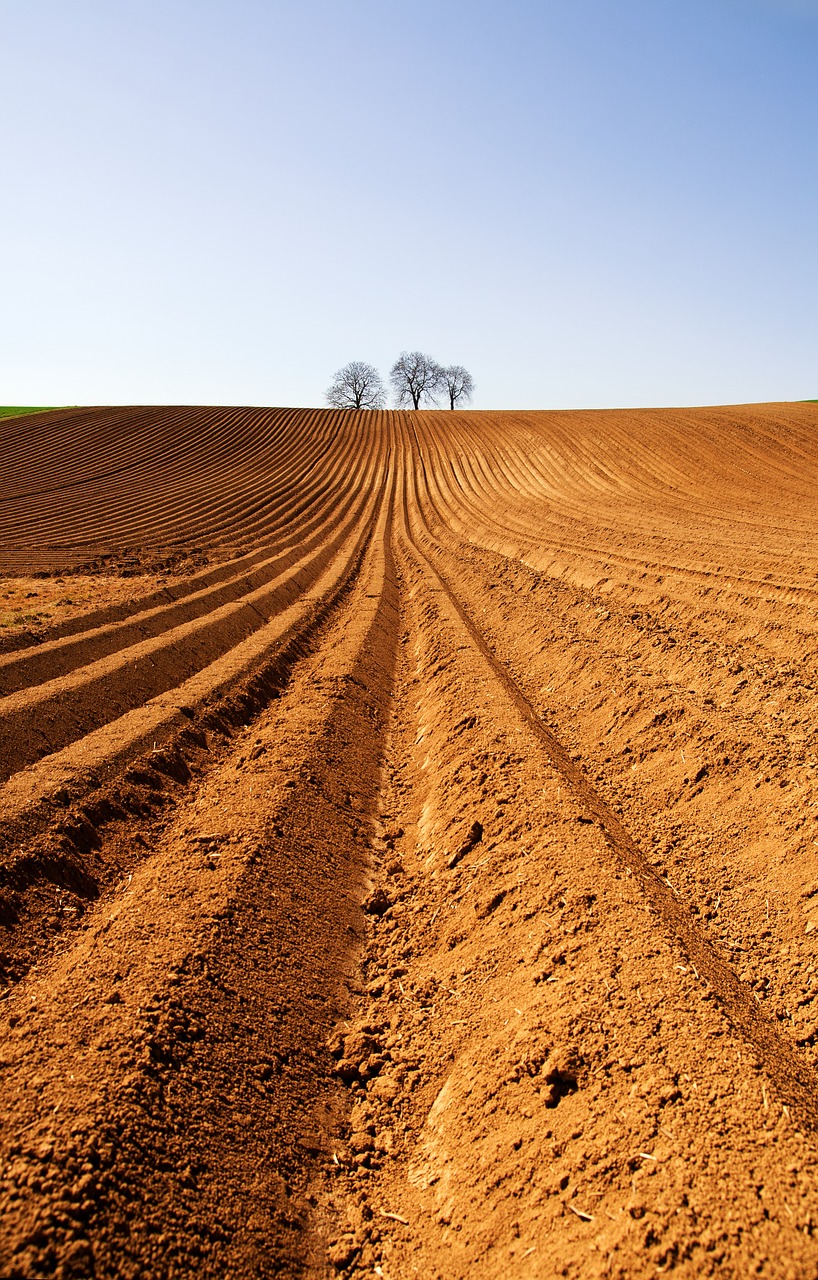
Till deeply every year, and then leave the soil fallow
- being sterilized and turning the minerals inert under the hot sun and/ or the drying winds
- waiting for the heavy rains which’ pounding will compact the soil, streaming into a runoff, taking the minerals downhill
- even deforest steep slopes, any land will do for the short term
- use costly chemical fertilizers to compensate for the losses
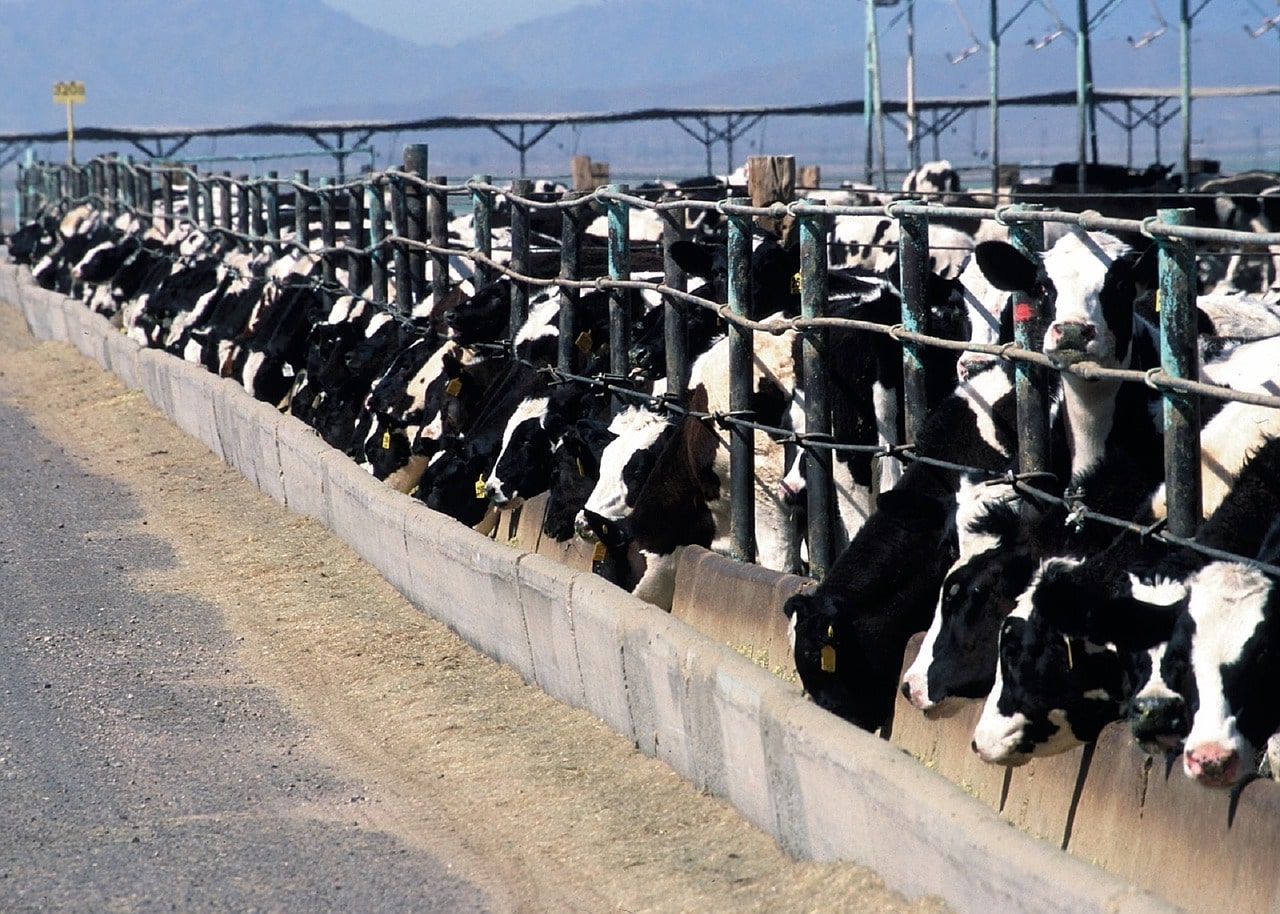
Livestock in mega factory farms
Feedlots instead of grazing
- you keep livestock in feedlots or when they are very lucky outside on grass, but always on the same small patch. Hardly any grazing, which means no breaking down of the methane they excrete. The unlucky ones are kept in chains or boxes and never even see daylight
- Depending on the species, horns, beaks, teeth, tails, testicles get amputated, mostly without anesthesia
- Low immunity, less productivity? Inject them with antibiotics, vaccines and growth-hormones.
- Import their fodder cheap, like (GMO-) soy, corn and other grains, from developing nations where there is less control on pollution and deforestation.
- The resulting slurry is mandatory land-spread by injectors.
- No worries about the imbalances all this creates: worldwide, in the animals and consumers, in the microbe population in your fields and in the groundwater. Methane is a far more potent greenhouse gas than CO2. If animals would be grazing on healthy pastures (evaporating moist), it gets broken down rapidly, 100x faster than produced by the animals.
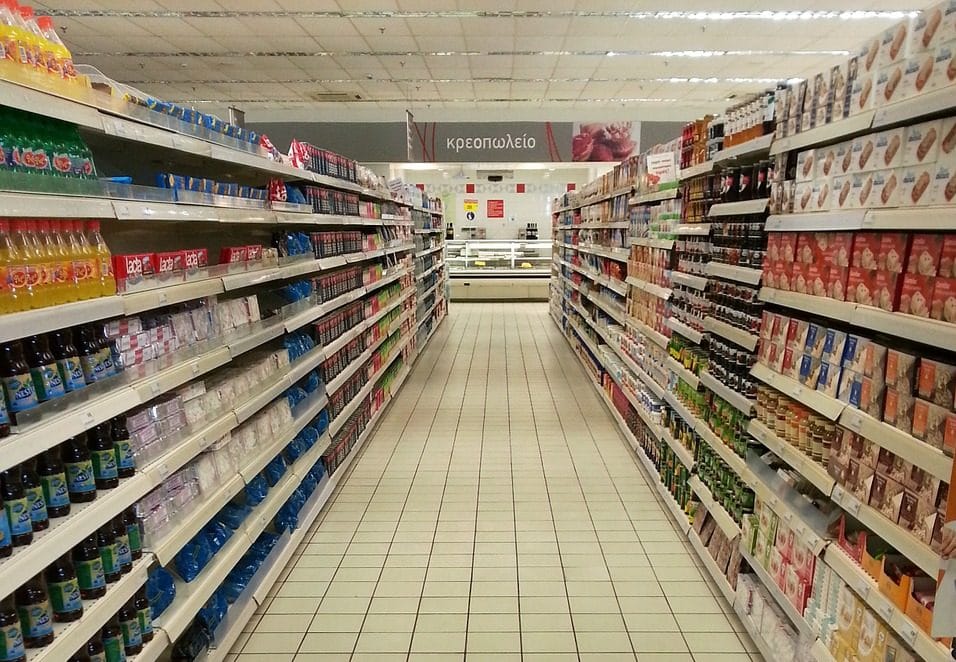
And this you call food
- Last step: pack everything in foam, plastic and cans that leak hormone disrupters which diminishes the fertility of your consumers
- and this you advertise as food.
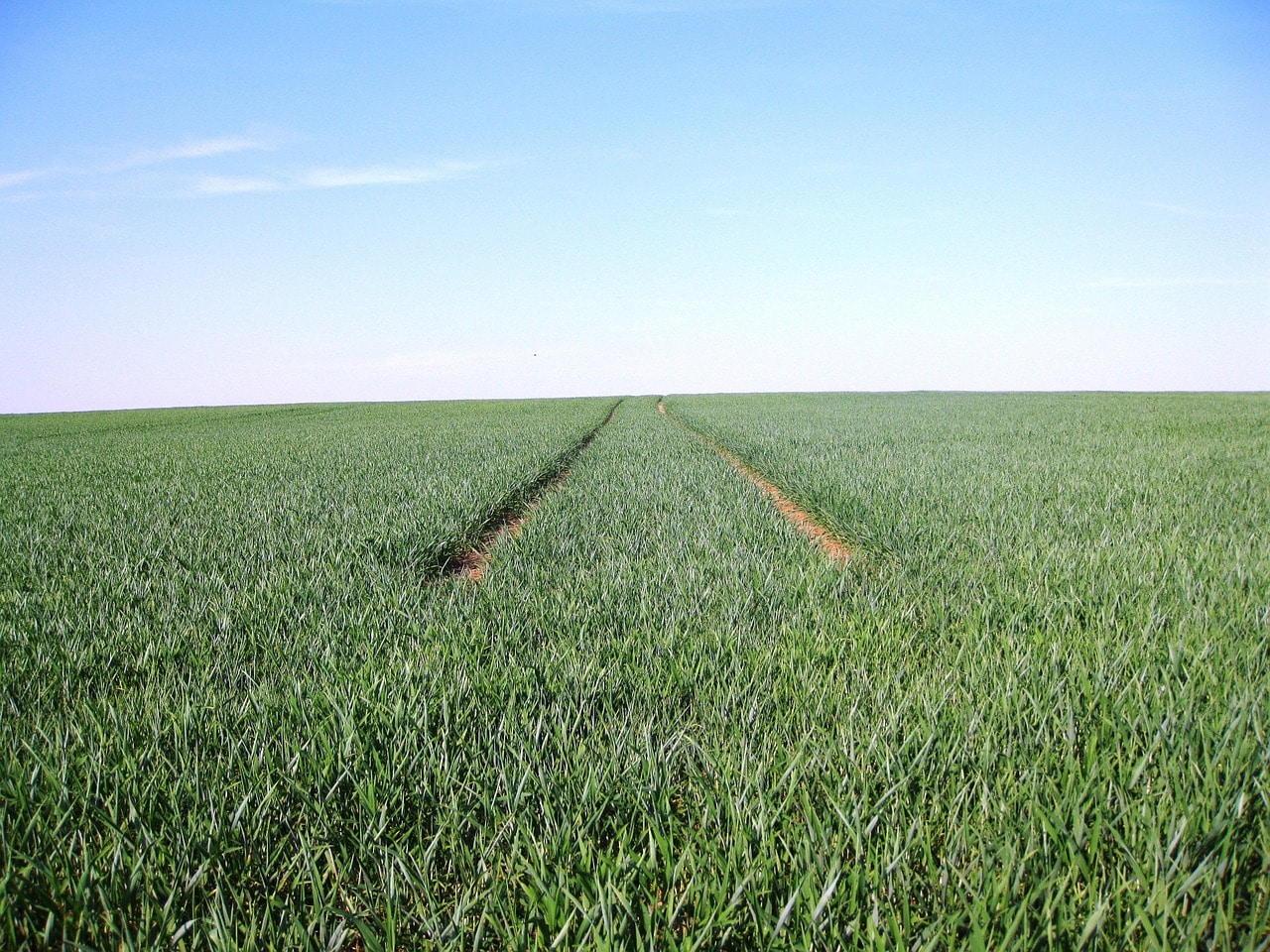
Monoculture, because it is 'efficient'
Simply kill everything but the cash-crop
- strip, burn, spray, control every thing else
- sow preferably GMO seeds so you can spray more roundup to save the money of manual weeding
- spray poisons against the ‘plagues’ that come to feast on your crop.
Since you leave no room for nature, there are no predators to help you. And the critters come to your field because they have nothing else left to eat,
Don’t bother that the pesticides, like Neonicotinoids, kills also insects like bees that you need to pollinate your crops…
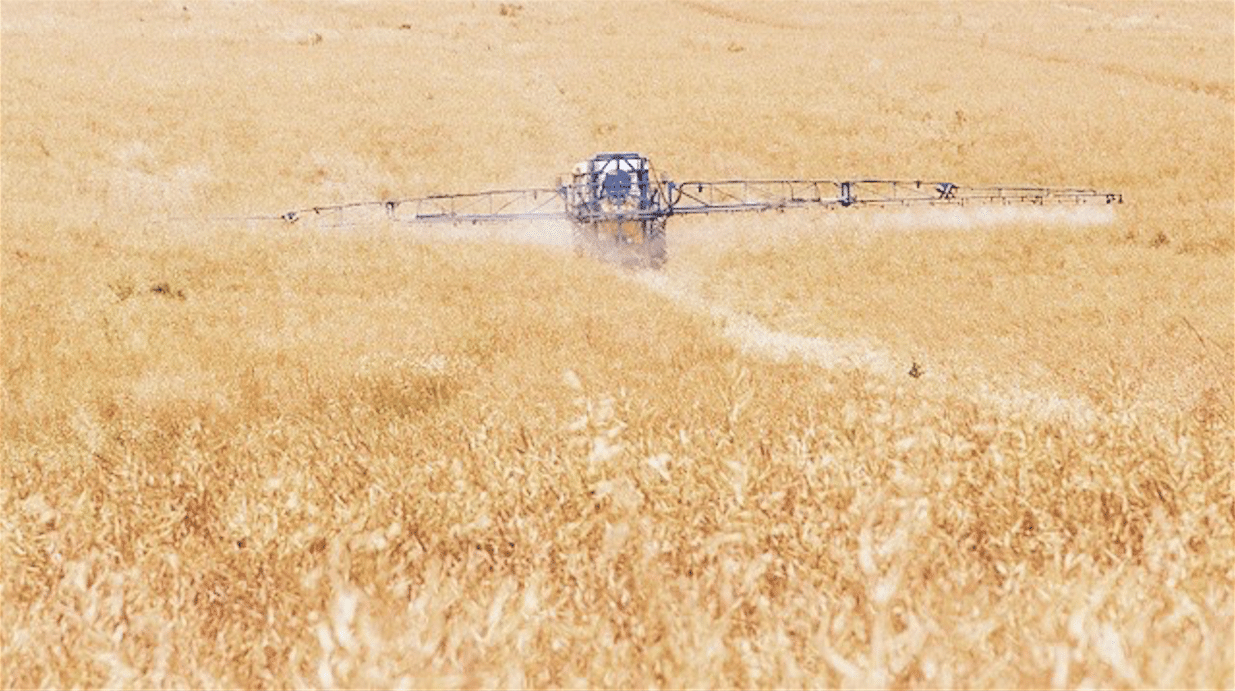
spraying herbicides, even just before harvest
Most used: Roundup (glyphosate), developed by Monsanto (now merged with Bayer); second most used: Atrazine, made by Syngenta
- spray glyphosate on grains just before harvest to dry all the kernels earlier and at once! Or spray it on potatoe plants, cotton and pulses to defoliate so it is easier to harvest.
- the producers still tell glyphosate is safe, although the World Health Organization defined it as a class 2a ‘probable’ carcinogen (probable = more than possible). By the way, the term ‘probable’ entered the eventual definition under pressure of industry lobbiers. Scientists had earlier defined it as carcinogen, period.
- glyphosate is suspected to cause non-Hodgkin lymphoma, food-intolerance and auto-immune diseases.
- Atrazine is sprayed on weeds in pastures, sugarcane, corn and wheat. Although it showed in animal tests to damage their liver, kidneys and heart. Male frogs are chemically castrated when they swim in water with concentrations 30 times lower than allowed levels.
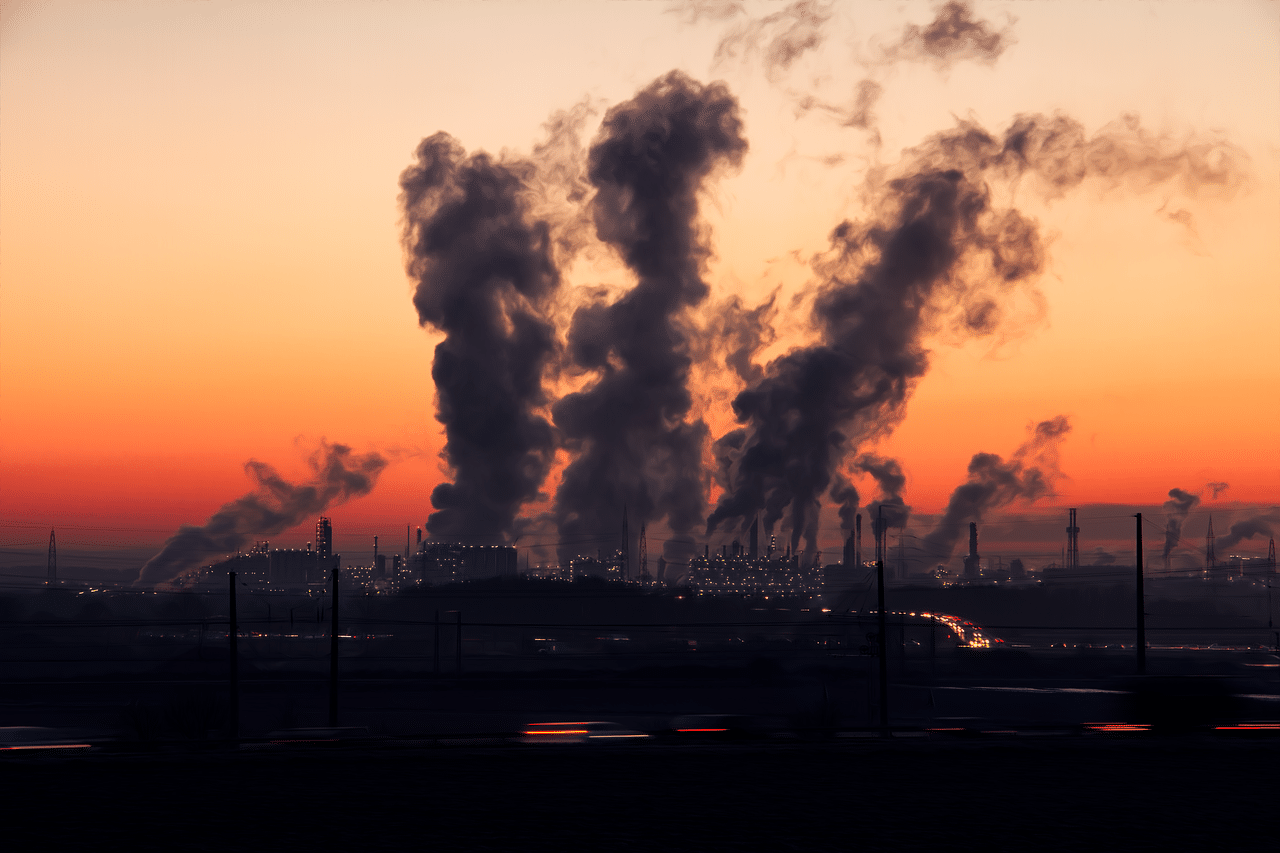
Processing of the harvest
ever more genius…
- Transport produce all over the planet to process it somewhere and then transport the end-product back again.
- This processing involves
irradiating
pasteurizing
sterilizing
hydrogenation
gassing to ripen
coloring
sweetening
enhancing with artificial flavors, preservatives, fillers and other additives
Brilliant!
We couldn’t have made it up
Images
Spraying grains, Public Domain Pictures, Pixabay, accessed April 26, 2018
Avocado: with license from Elegant Themes
So why are we letting this happen in our common garden, our planet?!
Are citizens and farmers not aware of the devastation?
“If so, where does one start as an individual? Recycling and buying organic is time consuming and expensive. And what is the point, if your government is still supporting polluting industries.
Since people feel powerless to change things, they seek meaning in life through instant gratification with consumer goods and social media.”
“And for farmers it is financially difficult to make the transition to organic. Taxes are too high, prices for their produce are too low – because of manipulation of global food prices and because of middle men – and in their spare time they have to keep up with forever changing regulations.
In all sectors of economy producers are under pressure. Investors want fast returns and don’t demand ethical behavior.“
Do we need more governance?
” I don’t think so. The Sovjet Union was top-heavy but the state of the environment was disastrous. And in the UN, it was not because of a lack of funding that it took some 40 years to ban DDT and asbestos… Policymakers were under pressure of giant corporations.
Secondly, who controls the controllers? Concessions for fracking, logging and mining keep being extended where there already exists regulation. The mentality at the top and the status quo must change, before you give those echelons even more power and money.”
“The status quo is set in stone by CEO’s without compassion and moral backbone. Bonuses and admiration from peers are more important to them than the thriving of life on our planet. They keep their employees in ignorance through compartmentalization. And dependency on making a living is too big to become whistle-blowers.
Most societies show a top down power structure, enabled by a collusion of government, big corporations, financial institutions, billionaire investors, scientists and fake news media.
People should stop to expect change from politics”
now how do we fix this ?
“You never change things by fighting the existing reality.
To change something, build a new model that makes the existing model obsolete”
Buckminster Fuller 1982
References and images
Sources:
Worldometers.info
Nationmaster.com
Quora.com
Images:
Pixabay under creative commons:
Devastation Marion Wunder Germany
Selfie Luis Wilker Perelo
Free flying parrots Anna Sulencka Poland
We cannot wait for politicians to save our environment. Farmers need the support of the public to switch to organic and even beyond
Farmers are becoming tired of the old-fashioned ways too. A new generation of farmers is ready to ‘go restorative’. but they cannot do it on their own. The Land Ownership Token will give them a boost.
Why farmers need to switch to regenerative methods?
The earth is small. Each person now ‘has’ 65 x 75 m for subsistence! We cannot continue to erode the topsoil and lose its water-absorbing capacity. Also because extreme weather on the globe and famines are for a large part caused by the so called ‘green revolution‘ ways
The buffer against extreme weather is to ‘cover’ Earth in semi-permanent green, preferably with a mix of an enormous variety of food trees and crops.
Decreasing the use of fossil fuels is not enough. Greening the planet would do the job much faster and would create abundance for every human and for wildlife.
Why change is usually so slow?
Life is already a struggle, consumers can’t afford organic.
Farmers, like every producer, are under pressure from investors, keeping up with the changing rules, taxes, world commodity prices.
Politics is in the grip of big industries, where at the top there is no concern for anything but profit.
The status quo seems to be set in stone. So we have to start a new model that bypasses all these reasons.
Why a crypto on a blockchain?
To gain global momentum. When a token can be traded on a crypto exchange it can go viral. Millions of small investors for the good cause could make a powerful change. Simply ignore and forget about the 1% at the top.
Blockchain technology makes the project transparent, controllable and secure: immutable registration of ownership and tracking of production.
Let’s Do Something Better Together
Image
Inactive account ID 12019, Africa, desert landscape
Through Pixabay, under creative commons
downloaded 14. July 2018
